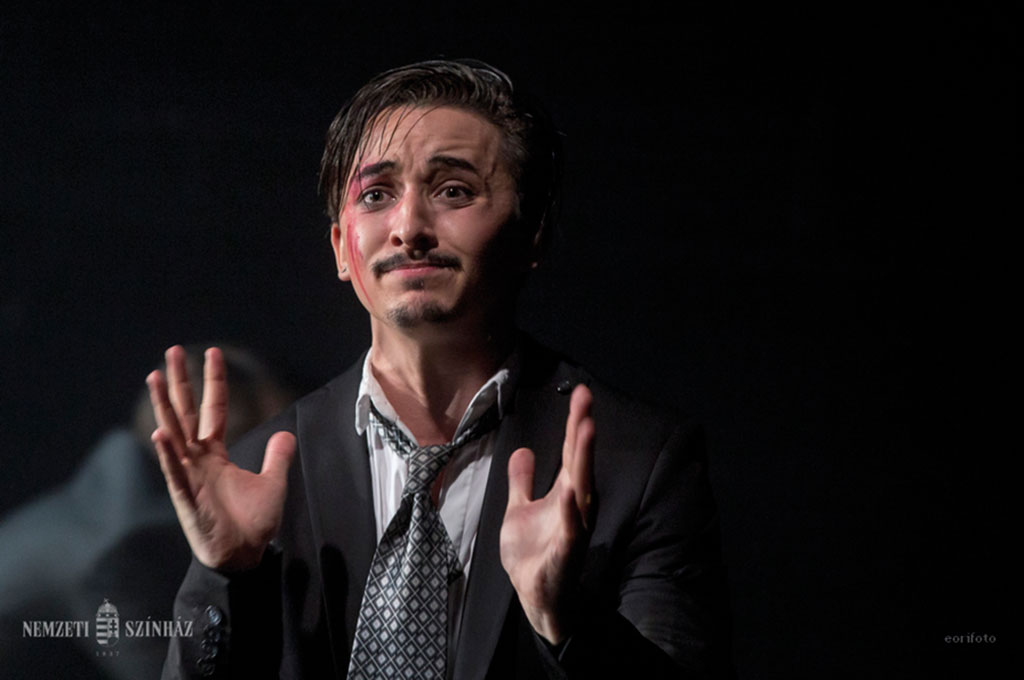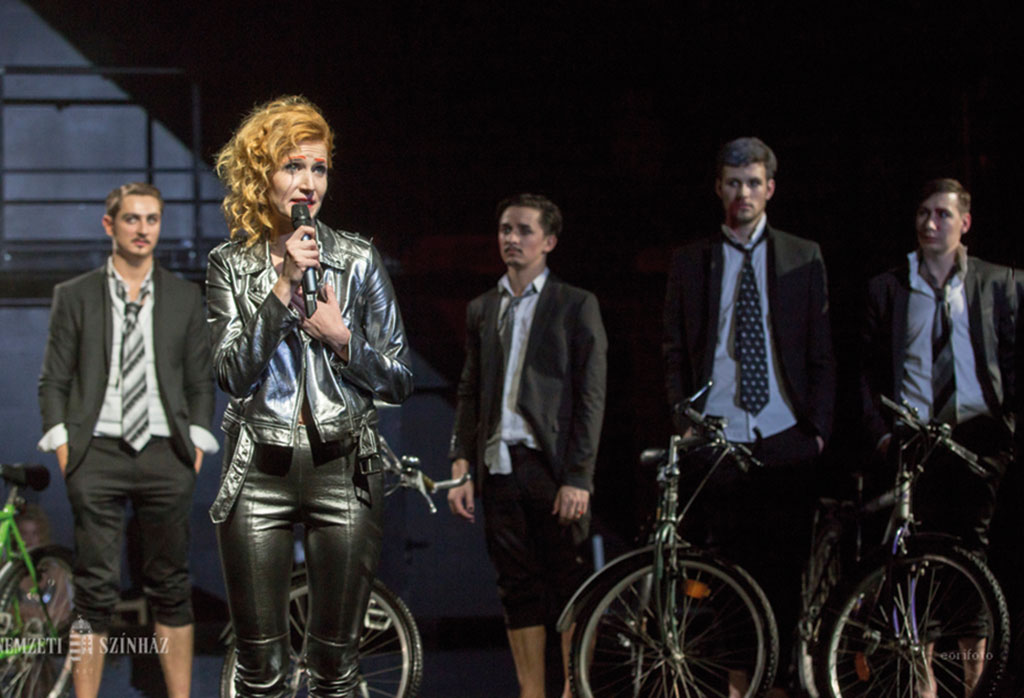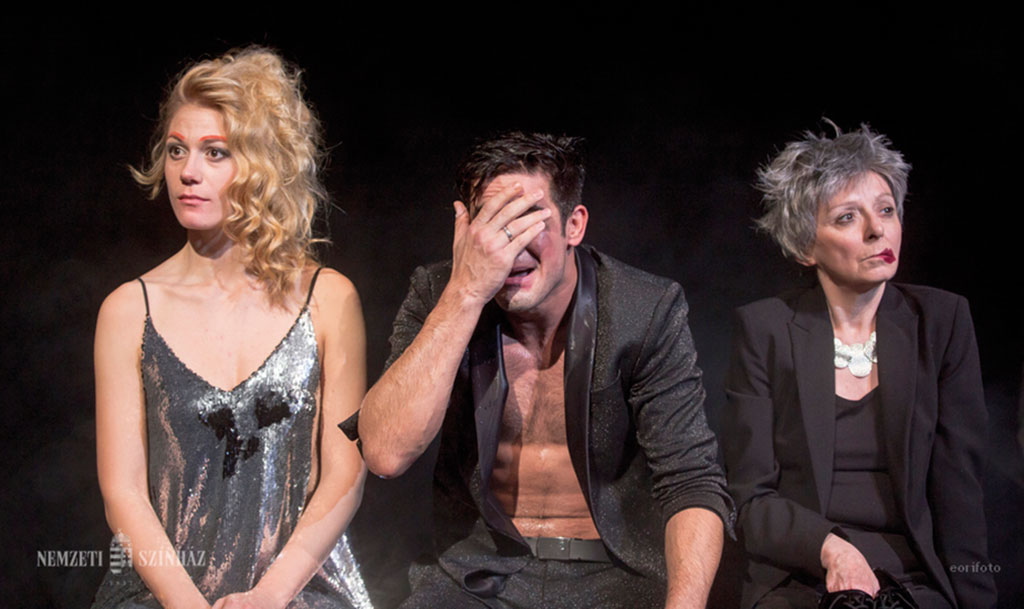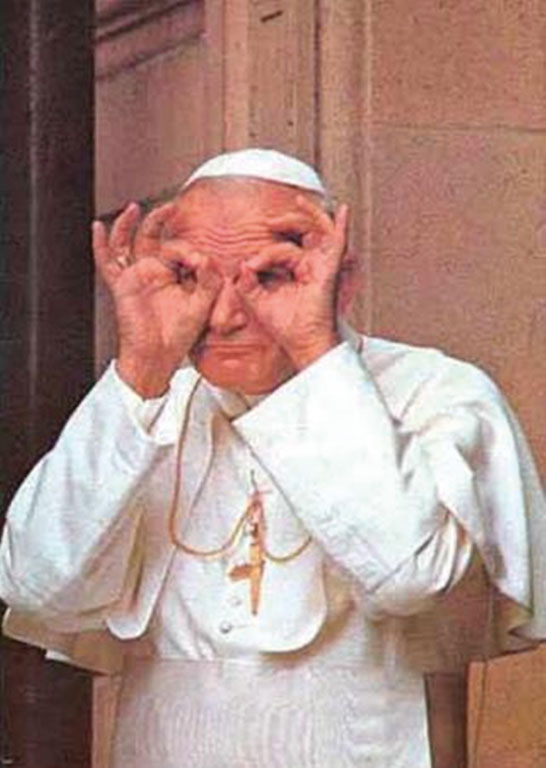Archives 2017
Life-and-Death Struggle of Stage Selves at the National Theatre
Since its premiere at the National Theatre in Budapest last autumn, Részegek (The Drunks), directed by Victor Ryzhakov, has been bringing down the house. It is shortlisted for the summer 2017 POSzT (National Theatre Festival in Pécs), too, where the previous season’s most highly esteemed Hungarian productions are presented each year. The original Hungarian language study was published in the December 2016 issue of Szcenárium. An interview related to the season’s other production invited to POSzT, III. Richárd (Richard III), co-produced by the National Theatre in Budapest and Gyulai Várszínház (Gyula Castle Theatre), with guest artists from the Vígszínház (Comedy Theatre) (d.: Attila Vidnyánszky Jnr, opened: 10 January 2017), was published last September. MITEM this year offers a unique opportunity for the youngest generation of Hungarian artists to present themselves on the international stage in these two productions. Victor Ryzhakov (b. 1960) is currently artistic director of Meyerhold Centre, Moscow. He was guest director at the Attila Vidnyánszky-led Csokonai Színház (Csokonai Theatre) in Debrecen in the period between 2006 and 2013 already. His Fodrásznő (The Hairdresser, 2009) won the award for best production at POSzT. As head teacher at the Academy of Dramatic Arts, Moscow Art Theatre, he has built strong links with the Kaposvári Egyetem Színházi Intézet (University of Kaposvár, Drama Institute) with students from the two countries taking part in regular exchange programmes.
Ah, with the Grape my fading life provide,
And wash the Body whence the Life has died,
And lay me, shrouded in the living Leaf,
By some not unfrequented Garden-side.
by Omar Khayyam
Zsolt Szász: It is a rare occasion that the same play is staged at two cutting-edge theatres in Budapest. The Europewide more and more popular contemporary playwright Ivan Vyrypaev’s play titled The Drunks directed by Peter Gothár has been performed at Kamra at Katona József Theatre since last December, while this November it was also shown at the National Theatre. This discussion is first of all about Victor Ryzhakov’s interpretation at the National Theatre, but it will also deal with the differences between the two directors’ concepts of the play.
Márta Tömöry: I regard it as important that in contrast with the recent trend of altering the original plays to be staged both Ryzhakov and Gothár are loyal to the original structure of Vyrypaev’s play: not only do they keep the two acts but also the order of the acts, moreover, the whole script translated by András Kozma as well as by Géza Morcsányi is staged without any changes.[1] Between the acts there is no interval in either production. At the National Theatre the first part as in the original script (except for the opening scene) is staged in interior sets which are continuously rearranged, while in the second part the outer space is filled with more and more water and is basically unchanged. Due to the limited dimensions of Katona Kamra there is no such contrast between open and closed space in the production directed by Gothár. The narrow air-raid shelter can be divided into three spaces: the audience is in the front, in the middle there is a suddenly narrowing corridor, which serves as the scenery itself, while at the farthest part of the stage there is a mirror wall. With this rather direct choice for the scenery the designer-director suggests that the audience (we) also belong to the the world of The Drunks. This is underpinned by the foreplay as well: the nylon coated woman (Martha – Judit Rezes) climbs out of the audience while tumbling over us she lands on the stage causing cynical laughter in the audience. There are no concrete sets representing interiors, the changes of scene are indicated by the props and objects animated by the actors: for instance a water tank with gold fish or a coffee machine and other similar kitchen appliances.
Zs. Sz.: Unfortunately I myself have not seen this performance, but in one of the reviews[2] it appears what this arrangement of space is capable of achieving: the figures coming from the depth “[of a narrowing corridor] seem to be decreasing in size as they draw closer to us in the enlarging space: the figures who appear to be enormous at the bottleneck become nothing more or less than drunken people when they are in front of us”.
M. T.: Certainly, in this staging the actors even exaggerate their drunkenness, which may be based on Vyrypaev’s instructions. It is another question, as the quotation at the head of this interview suggests, drunkenness can have a different interpretation from the everyday interpretation of being under alcoholic influence: it can be considered as the holy state of elevation. Let us not forget that theatrical art had developed from the cult of Dionysos who used to be the God of grapes and wine. Vyrypaev himself had also chosen as his motto an Omar Khayyám poem whose few lines can be read on an “electric board” in the background; however, what I have discovered is rather the lovely euphoria which links the world of the living and the world of the dead. What Vyrypaev’s intention was with this motto is to orientate both the reader and then the director so that they would not look for the meaning of the acts as what could be found in them is purely the form, the essence is invisible for everybody.[3]
Ágnes Pálfi: I had seen the production at the National Theatre first, and then read the play. This is why I was so much taken by surprise that the scenes are introduced with naturalistic directions by the author. In these directions there are lengthy and detailed descriptions of the mental states of the characters, their direct environments, objective reality, clothes etc. When Ryzhakov directs the play he lacks external or realistic characterisation. Both acts take place in an extremely abstract, homogeneous space in the theatre: the audience find themselves in a united, spherical and gradually enlarging psycho-space. The prelude of the “noise” band positioned at arm’s length distance from the audience serves the same purpose. In the second part of the play it performs the same function when the actors are coming not from the front but rather from the background; they are also leaving for the background, and they are also seated there facing the audience even when they are not supposed to be on the scene. At the beginning of the last scene the opening and the illumination of the huge stage doors is a significant moment, when the festival director acted by Trill Zsolt says “the time for human beings is over”. This connection is of key importance regarding the production as a whole: it is for opening up a new space-time dimension. In my view the metaphysical surplus of the show originates from this “as a whole” approach, which equally affects the scene, the Trebubov’s concept of design as well as the whole staging. This kind of “spaciousness in view” would never have happened if it had only been for the “philosophical” contents of the script.
Zs. Sz.: I would like to emphasize two concrete ecstatic impacts made acoustically and visually on this psycho-space audience. However, as the use of the word ’ecstatic’ is not so obvious for everybody, let me just refer to the so elaborate ecstasy technic in the Japanese noh theatre, which has been in use for centuries. In the noh theatre every performance starts with a five to ten-minute drum or flute play. The three drums are tuned in high, low and middle frequencies so that their repeated, forceful and monotonous sounding will result in a pain in the audience’s stomach nerves centre, and then recover from it; at the same time the long sounds played on the flute result in a sort of oniric (sleeplike) state in both the actors and the audience. The square shaped stage which is marked with columns – with the pine tree symbolizing eternal life in the background marks both the external and internal world, the cosmic spaciousness of existence. The function of the noise band in the production is very similar to this technique whose composer, Alexander Manockov also takes into consideration this kind of physiological impact which the audience is unable to resist.
Á. P.: I have also seen some Japanese kabuki and noh productions in which indeed the audience ended up in an entirely different state of mind. On the borderline of dreaming and waking I was initiated into a completely different kind of perception than what I had experienced in European theatres before. As I have done yoga I do know that the purpose of breathing exercises is also to achieve this state of mind or at least reach the level where the coming and going of uncontrollable thoughts in the human mind can be calmed. The sound band’s foreplay was perfectly suitable for achieving this here.
Zs. Sz.: Yet the visual effects make a similar impact. The white square-shaped play-field standing on one corner and the black square projected on its surface which continuously moves makes the audience’s attention focused and at the same time makes them feel the delirium. This hardly sensible oscillation (pixilation) based on the physical laws of optics and physiological laws of vision causes irisation, which is the special effect of the uncertainty of the brain whether it sees white on black or black on white. The same is typical of the state of drunkenness when one is unable to distinguish a close object from a distant one, a fast movement from a slow one, as one loses one’s realistic sense of space or time.

Á. P.: Now due to this complex impact – I must confess I have always sensed this square as white and illuminated – I understand why Attila József’s Consciousness (Translator’s note: József Attila is a famous Hungarian poet of the first half of the 20th century) came to my mind: “Silence gave ear: the clock struck one. / Maybe you could go back to boydom; / walled in with concrete dank and wan, / maybe imagine hints of freedom. / And now I stand, and through the sky-dome / the stars, the Dippers, shine and burn / like bars, the sign of jail and thraldom, / above a silent cell of stone.” (Translated by Zsuzsanna Ozsváth and Frederick Turner)
Zs. Sz.: I was also surprised when seeing the photos taken of the production and I realised that during the rearrangements on the open stage the light effects were inverted: then a white grid on a black foundation could be seen, which is another evidence of the conscious efforts that the designers and the director were making.

M. T.: These are all very exciting revelations. However, if I in the quality of a dramaturge rely on the script I consider it important to emphasize that this play has a perfect structure which is built upon the classical European rules, even complying with the triple unit principle by Boileau, this is a story of a a night of drunkenness that lasts until dawn: three generations’ confessions about life, love, death and God, which also has reference to the psychological grounding of a play by Stanislavsky. In the play every character has a decipherable and further developing motivation, based on which they can also appear on stage as a concrete real person. We may witness crises and changes of human life in almost every scene: the couples divorce and remarry, confess old secrets of adultery, hold stag parties a day before their weddings. In the first act we just see flashes of the dramas that occur in ordinary people’s lives, while in the second one it becomes obvious that in spite of the need for change nothing is really changing. Gothár often takes advantage of the role play that is based on psychologically realistic life situations. At the same time Ryzhakov’s direction is quite similar. Seeing Mark the festival director (Zsolt Trill) and Rosa the prostitute (Ágnes Barta) in the last scene I had a real urge to uncover the intrinsic motivations of other characters too. Because this situation shows the final state with no way out: Mark, being aware that he is going to die soon, thinks over his useless life, while Rosa does the same when she faces the reality of living as a prostitute. In this dialogue there is a dramatic collision, which is the most relevant requirement in the European tradition from the Ancient Greek tragedies to contemporary theatre. Their meeting is the most complex linguistically too, as their fates are uncovered their characters also appear to be the most realistic and complex in the play; it also offers the opportunity for redemption. Let me add that in this act in Gothár’s production the festival director (Mark – Máté Mészáros) would not want to face up to and account for his life: he has got stuck in his cynicism, he is an irredeemable character who just wants to cheat on the girl who sincerely opens up to him (Rosa – Eszter Ónodi).

Á. P.: I agree with what you have just mentioned that written plays have a strong generational character: Vyrypaev primarily identifies his characters with their ages. At the same time the characters in their twenties, thirties and forties (fifties) still speak the same way even if they are in different life situations. And still about the Vyrypaev-text, stag party of the over-aged thirties in a vegetarian restaurant (Act 1, Scene 4) is a teenage-like, infantile romping, which is thematically linked to the previous four scenes and which is featured by some, so to say, “well-established” couples who are 15–20 years older (Act 1, Scene 3). From now on the relationship with God becomes the central topic of the play (the older generation’s theme is that every man is God’s body while the younger ones’ is that everybody hears the whisper of the Lord in their hearts). Jesus Christ the “Son of Man” as the Redeemer only appears in the closing act of the play, until then only the Lord is mentioned. However, in the scenes in which generations conflict with each other (Act 2, Scene 1, Gustav, Lora and Martha; Act 2 Scene 3, Karl, Linda, Laurenz and Magda; Act 2, Scene 4 Mark and Rosa) the absurd gives way more and more to a melodramatic mood. This concept is closely supported by the director of the National Theatre production. What is dramatically different in comparison with the play is that in this performance there are only two generations of actors instead of three: those in their thirties are also played by actors in their twenties. This is the reason why in the “marriage” scene of Act 2 (2/2) the “bridegroom’s” (Max, Attila Vidnyánszky Junior) monologue sounds like his very own manifesto of the unbearable nature of the current world state and the negative mood of his own generation: wage slavery, exaggerated liberalism, alienation from reality, general apathy, just to mention the most significant motifs. In my opinion this “virgo speech” asserts the national character of the play and makes it really Hungarian, hic et nunc the credibility of this production is established (the real age (25) of the actor is also mentioned in it). The fashion model who is converted into a “bride” (Laura, Eszter Ács) has a consecutive monologue about giving up liberty, and although it starts in the same mood and as if it were intended to be a programme manifesto about the real calling of a woman, it ends up at the other extreme: it becomes a grotesques apologetic for surrendering oneself.

Zs. Sz.: Yes, indeed, I do also feel that Attila Vidnyánszky Junior’s monologue is almost a 19th century romantic manifesto: an individual and a script almost fully overlapping each other. Self criticism and criticism of a society is expressed in the style of an era when it was taken for granted that whoever speaks his mind will practice what he preaches. Yet, there is an interesting paradox which featured in our public debate over postmodernism and sacrality a few years ago.[4] While according to postmodern (or post-dramatic) theory this world is over, in reality Romantic Aesthetics is still a point of reference, in which the individual ambitions and social responsibility as well as political and poetic rhetorics can still be overlapped by each other in the long run. He still relates to this ideal when he claims: there is no drama any more these days and there are no heroes. It is worth quoting what Attila Végh said during this debate: “… the expression “postmodern” is a typical romantic expression. It sounds like the sunset of the West. From this angle postmodern is the failure of the intention to create a new paradigm, and the reason for this is that our perspective, desire for catharsis or our aesthetical horizon are all determined by Romanticism. This situation has not changed ever since. (…) it is possible to have a romantic enthusiasm while wanting to remain exempt from romantic sentiments, but eventually the cat comes out of the bag.”

Á. P.: This production has surprised me because it proves that the reason why a valid theatrical artwork comes into being may also be that the characters are unable to say what they mean because they have not been educated or socially conditioned to do so. I do miss something but at the same time all I have are commonplaces and clichés, I am overwhelmed by them. I have lost, or to be precise I have not even acquired a personal creative attitude to the language. In a certain sense this play is also about this kind of losing track of the language. But if we just focus on the production in question it is rather about what happens if you begin cultivating this minimalistic rudimentary “root language”. When living people, vital theatrical beings voice it, it starts showing surprising vital signs, implying the pristine integrity of the world which is still Christianity with its own ethics and set of symbols.
Zs. Sz.: The structure of a piece of music which is characteristic of the whole play serves this purpose, the repetition of certain cantos, their articulation by a different actor within one scene or even through several scenes. This results in the kind of mechanism of action on stage that may be described with the expression “sacred parody.”[5] This means that the essence of sacredness is referred to in a manner of parody. This is called the “festive laugh” by Bakhtin, when the verbally indescribable spirituality that links us is defined in a reversed, humorous way. This is what happens in the scene in the vegetarian restaurant when there are several variations of I/you/ he/she – all of us can hear the whisper of the Lord in our hearts. After this “text panel” has already been used for the third time and still makes the audience laugh, however, the end of the scene makes all of us think hard and obliges us to meditate.
M. T.: This procedure is not new, similarly wide range of tunes are familiar from absurd dramas by Queneau, Ionesco and Beckett, and first of all from Waiting for Godot, whose iconic language abounds in hyatuses, repetitions, mistakenly used as well as fragmented words, yet, it reflects closely the ecstatic struggle of European men for expressions and the faith for the true meanings of words. The characters of this Vyrypaev-play are not so abstract as Godot’s clown-like performers, who are meant to embody all the basic human characteristics. In The Drunks the characters have concrete positions and statuses, which they are sometimes made to express. The majority of the men are bankers or managers (Laurenz is the only man whose profession is unknown). Among the women there is a model (Laura –Eszter Ács), a prostitute (Rosa – Ágnes Barta), the two wives (Lora – Nelli Szűcs; Linda –Mari Nagy) and the girlfriend (Magda – Katona Kinga) have no reference to their occupations. BANK is a dominant metaphor even for the film festival director (Mark – Zsolt Trill) – see it in the last scene when a bank account, interest, loan and credit are mentioned, which culminates in the idea that even our lives are loaned to us when we are born.
Á. P.: Based on social roles a kind of realistic content may as well be constructed out of these reality elements, nonetheless the roles in the play are rather temporarily suspended due to drunkenness. In fact, the spectators do not really see the actors’ characters’ struggles but rather the actors’ life-and-death struggle; they like their stage selves[6] become a kind of collective ego and the symbol of MAN during the performance. The expressive form of this life-and-death struggle is humour, moreover, the most archaic form of it, the special language of this world, face-painting reminiscent of clowns, caricature-like movements rich in acrobatic elements, speech that is too fast and too loud. If we had to exalt the virtues of this performance we could say that what we actually see on stage is the victory of virtuosic stage selves over the socially forced indignant roles. The two culminating scenes of the production (the vegetarian restaurant in the first act and the “nuptial ceremony” in the second one) may as well be regarded as a demonstration of young actors’ generation: they are not too old but almost teenagers, their crispness and anxiety are their primary qualities[7]. However, their provocative, youthful and impulsive play is characteristic of the whole play and all actors.
M. T.: If there were any chance to express in detail how the actors’ life-and-death struggle should be interpreted, I would definitely refer to how Nelli Szűcs walks in her stilettos on the slanting stage; Zsolt Trill’s and Estilla Mikecz’s entrée with their neckbreaking stunt; Attila Vidnyánszky Junior’s hitting his nose on the table while falling; the acrobatic fight reminding of oriental martial arts as well as American Western movie parodies (Sándor Berettyán as Rudolf; Roland Bordás as Gabriel; László Szabó Sebestyén as Gabriel); and I would like to recall the murderous tension and naturalistic corporality of the previously quoted last scene, too.

Zs. Sz.: Yet if the psycho-realistic and melodramatic scenes are listed, the actors’ confessions are counter-pointed and have multiple meanings owing to the surplus of gestures. This makes Tibor Fehér’s (Laurenz) and the two friends’ (Magda: Kinga Katona and Laura: Eszter Ács) love triangle scene very special, which – due to the brilliantly executed stage technique of turning heads (“headslashing”) bears close remembrance to a Moliére scene in which Don Juan promises to marry two peasant girls at the same time. But we could also refer to László Tóth’s (Karl) and Attila Kristán’s (Gustav) allusion in the scene of the confession of adultery which reminds us of the style of dialogues in the world-famous Beavis and Butthead cartoon making the impression that there is a completely meaningless debate between two superannuated guys, a rocker and a punk.

Á. P.: The “love” scene between Attila Kristán (Gustav) and Estilla Mikecz (Martha) appears to be a relationship between two infantile kindergarten kids: this is expressed by their pitifully naive but at the same time silly clownlike facial expressions, when they face the audience holding each other’s hands; their objects such as a scooter and a balloon also refer to this. This scene has a totally different mood from the others: this couple creates the “sex appeal” of unspoilt bliss and hope for a moment for the audience, which is not even overriden by the ironical sentence that Martha says when she leaves the aging couple alone and disappears from the scene: “Thanks a lot to your shitty families for this gorgeous pearl of love.”

Zs. Sz.: In this analysis the character of the play who is not shaken up by any everyday conflicts has not been mentioned so far. He is either so downtrodden that he gave up protesting ages ago against whatever insults he received or because he is so wise –as the poet puts it – that he oversees this “present pub”. Mari Nagy who acts as Linda got the shortest script from the playwright. Nevertheless, perhaps she has the toughest task when she has to target the audience with one exclamation containing the “main message” of the play to the audience which we have heard from Lorenz (Tibor Fehér) before. What makes this role even more challenging for her is that what she needs to make a dirty exclamation: “Ne fossatok!” (“Do not shit!”) However, Mari Nagy faces this challenge really well: she says this sentence by making the audience feel simultaneously that her self-esteem is hurt and she would like to break free, moreover, she even shows a preacher’s attitude, which can especially be touching to those who realize that this is the paraphrase of Pope John Paul II’s imperative message from the Bible: “Do not be afraid”.
Translated by Anikó Kocsis
[1] See the interview with András Kozma in Szcenárium, December 2016.
[2] Critical remarks by Ákos Török were published in 7óra7 (23. 12. 2015.)
[3] See the last verse of Vyrypaev’s choice for a motto: “Все, что видишь ты, – видимость только одна / Только форма – а суть никому не видна. / Смысла этих картинок понять не пытайся – / Сядь спокойно в сторонке и выпей вина!”
[4] See the edited notes taken at the workshop held at DESZKA Festival in Debrecen in 2013 which was published in Szcenárium (47–57, December 2013).
[5] See: Attila Végh: Aranykori nevetés (Golden Age Laughter), as well as Zsolt Szász’s and Ágnes Pálfi’s publication titled Széljegyzetek az Aranykori nevetés (Footnotes to Golden Age Laughter) című íráshoz Szcenárium, pp 30–39, October 2013.
[6] See István Gedő Bessenyei’s writings: “Halál, hol a te fullánkod!?” Dedaramatizáló törekvések Vidnyánszky Attila rendezéseiben (“Oh, Death, Where is Your Sting!?” Endeavours of De-Dramatization in Attila Vidnyánszky’s Stagings), Szcenárium, 16 October 2013
[7] About this current generational trend see: Milyen világ az, amelyben ilyen gonosszá válik az ember? (What World Is It Which Makes Man So Evil?) – Zsolt Szász interviews Miklós Vecsei, Szcenárium, pp 41–49 September 2016
(15 April 2017)











